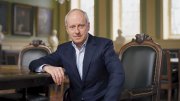On July 28, Harvard’s neighbor published the final report of the Institute-wide Task Force on the Future of MIT Education, and obligingly made it available for interested parties (web.mit.edu/future-report/TaskForceFinal_July28.pdf). Even in mid summer, it made for gripping reading about teaching, learning, and research elsewhere in Cambridge, and beyond.
Those sober, calculating engineers turn out to be giddy about transforming education. The task force (faculty and staff members and students, plus alumni and governing-board advisory groups) embraces “modular” instruction units, rather than conventional courses; flexibility, so students may “reduce or extend their time to degree”; options for students to engage further in teaching and service; for-credit summer classes in online and “blended” formats (five experimental classes were held in 2014); revised undergraduate requirements (for basic science, communications-intensive, and humanities, arts, and social-sciences courses); international connections among students, alumni, and MITx online learners around the world; and more.
Their ideas verge on breathtaking: “The very notion of a ‘class’ may be outmoded,” as online modular libraries are assembled. MIT should explore “game-based” learning, and “define a K-12 strategy” to expand offerings for pre-college students. Departments should shape serial online courses meant to qualify users for professional certification—and generate revenue. By 2020, “the roles of MITx instructor and MITx student may exist.” “Academic villages” should feature new kinds of classrooms, labs, and “maker spaces.” And the recommendations are tied to a suggested financial model that could work, given MIT’s revenues, costs, and aspirations.
Shrugging off MIT’s perspective as inapplicable elsewhere—given its origin at an engineering school with a unified pedagogy and an imminent capital campaign—is shortsighted. In fact, the attempt to engage both faculty and the wider community (through extensive surveys) in envisioning MIT’s educational future is invigorating in and of itself.
Will the result indeed “transform pedagogy through bold but thoughtful experimentation, extend MIT’s impact to the world, broaden access to high-quality education, and improve affordability for future generations of learners,” as its authors hope? Perhaps not. But the odds are certainly better than if they were never asked to imagine what their institution might do—or were too timid to aim high.
~John S. Rosenberg, Editor







